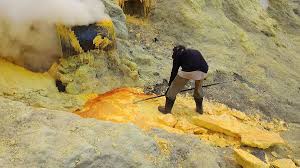
In 2024, big data is transforming the gold mining industry, revolutionizing how decisions are made, operations are managed, and resources are optimized. The integration of big data analytics into mining practices is enhancing efficiency, reducing costs, and improving safety. This article explores how big data is reshaping gold mining and the key ways it is changing the industry.
1. Introduction
Gold mining has traditionally relied on experience and intuition, but the rise of big data is shifting the industry towards more data-driven decision-making. By harnessing vast amounts of data from various sources, mining companies can gain deeper insights and make more informed decisions. This article examines the impact of big data on gold mining and how it is driving innovation and efficiency in 2024.
2. Advanced Exploration and Resource Assessment
Enhanced Geological Surveys
Big data is transforming geological surveys by providing a more comprehensive understanding of mineral deposits. Advanced data analytics processes geological data from satellite imagery, seismic surveys, and drill results to identify potential gold deposits with greater accuracy. Machine learning algorithms analyze this data to detect patterns and anomalies, improving exploration success rates and reducing the risk of costly mistakes.
Improved Resource Estimation
Resource estimation is becoming more accurate and reliable thanks to big data. Mining companies use data from geological surveys, historical mining records, and real-time exploration data to build detailed models of ore bodies. Big data analytics refine these models, providing more precise estimates of gold reserves and enabling better planning and resource management.
3. Operational Efficiency and Optimization
Real-Time Monitoring and Predictive Maintenance
Big data enables real-time monitoring of mining operations, providing insights into equipment performance and operational conditions. Sensors and IoT devices collect data from machinery, which is analyzed to identify inefficiencies and potential issues. Predictive maintenance algorithms use this data to forecast equipment failures before they occur, allowing for timely maintenance and reducing downtime.
Process Optimization
Data-driven insights are optimizing various aspects of mining operations, including drilling, blasting, and ore processing. By analyzing data on ore characteristics, equipment performance, and operational conditions, big data analytics can recommend adjustments to improve efficiency. For example, data can be used to optimize drilling patterns, blasting techniques, and processing parameters, leading to higher productivity and lower costs.
4. Enhancing Safety and Risk Management
Real-Time Safety Monitoring
Safety is a critical concern in gold mining, and big data is enhancing safety measures through real-time monitoring. Data from safety sensors, environmental monitors, and worker wearables is analyzed to detect potential hazards and unsafe conditions. Predictive analytics provide early warnings and recommend safety interventions, helping to prevent accidents and improve overall safety.
Risk Assessment and Management
Big data analytics is improving risk assessment and management in gold mining. By analyzing historical data, environmental conditions, and operational variables, mining companies can identify potential risks and develop mitigation strategies. This data-driven approach enhances decision-making and helps to manage risks associated with mining operations.
5. Sustainable Mining Practices
Environmental Impact Monitoring
Big data is playing a crucial role in monitoring and minimizing the environmental impact of gold mining. Environmental sensors and data analytics track variables such as water usage, air quality, and waste generation. By analyzing this data, mining companies can implement measures to reduce their environmental footprint and ensure compliance with environmental regulations.
Resource Efficiency
Data-driven approaches are improving resource efficiency by optimizing the use of materials and energy. Big data analytics identify opportunities for reducing waste, improving recycling processes, and conserving energy. These practices contribute to more sustainable mining operations and reduce the overall environmental impact.
6. Economic and Strategic Insights
Financial Performance Analysis
Big data provides valuable insights into financial performance and cost management. Analytics tools analyze data on production costs, market trends, and financial metrics to identify areas for cost reduction and revenue enhancement. This data-driven approach helps mining companies to optimize their financial performance and make informed strategic decisions.
Market and Demand Forecasting
Understanding market trends and demand patterns is essential for strategic planning in gold mining. Big data analytics track market data, economic indicators, and industry trends to forecast gold prices and demand. This information enables mining companies to make better decisions about production levels, investment strategies, and market positioning.
7. Future Trends in Data-Driven Mining
Integration of AI and Machine Learning
The integration of AI and machine learning with big data is expected to drive further advancements in gold mining. AI algorithms will enhance data analysis capabilities, enabling more accurate predictions and automated decision-making. Machine learning models will continuously improve based on new data, leading to more refined insights and operational efficiencies.
Development of Smart Mining Technologies
Smart mining technologies that leverage big data and IoT are poised to revolutionize the industry. These technologies will enable more connected and automated mining operations, with real-time data integration and advanced analytics driving operational decisions. Smart mining systems will enhance efficiency, safety, and sustainability in the gold mining sector.
8. Conclusion
Big data is transforming gold mining by enhancing exploration, optimizing operations, improving safety, and supporting sustainable practices. The integration of advanced data analytics into mining operations is driving innovation and efficiency, positioning the industry for future growth. Embracing big data and leveraging its potential will be key to staying competitive and achieving long-term success in gold mining.
9. FAQ
1. How is big data used in gold mining exploration?
Big data enhances exploration by analyzing geological surveys, satellite imagery, and drill results to identify potential gold deposits with greater accuracy.
2. What are the benefits of real-time monitoring in mining operations?
Real-time monitoring provides insights into equipment performance and operational conditions, allowing for predictive maintenance, process optimization, and improved safety.
3. How does big data contribute to sustainable mining practices?
Big data helps monitor environmental impact, optimize resource use, and implement measures to reduce waste and conserve energy, contributing to more sustainable mining operations.